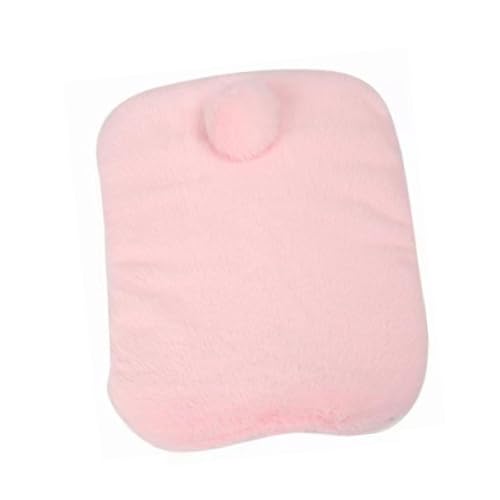You are using an out of date browser. It may not display this or other websites correctly.
You should upgrade or use an alternative browser.
You should upgrade or use an alternative browser.
Keep Naomi in Your Prayers
- Thread starter MyBabyBunnies
- Start date

Help Support Rabbits Online Forum:
This site may earn a commission from merchant affiliate
links, including eBay, Amazon, and others.
Bo B Bunny
Well-Known Member
She was compensating for her unbalance. Poor baby. I hope it gets better really soon. 
Poor girl. She must be feeling so strange. How is Chase coping with her?
I know how worried you must be Laura . I'm keeping all positive thoughts coming your way!
. I'm keeping all positive thoughts coming your way!
Jan
I know how worried you must be Laura
Jan
dquesnel
Well-Known Member
Sending positive thought to you and Naomi's direction. It may take another 48 hrs to see improvement. I hope this treatment works- Hope your girl improves soon!
Pipp
Well-Known Member
Laura, can we put this in the Infirmary? Good experiences, info for others.
S
S
MyBabyBunnies
Well-Known Member
I'm going to cautiously say that I see some improvement today. I've been syringe feeding her a pellet slurry and water just to ensure she gets something in her system. Today she is still not eating as much (I haven't seen her touch pellets) but she is nibbling on hay consistantly and the oats I give her. It's a big relief to know she's eating enough to keep her system moving.
She's a lot more active today. Her head is still tilted at about 1-2 o'clock (more when she rests) but she has been stretching out like normal and she's been very curious! I lined the x-pen with cardboard because she flipped over once and got her foot stuck between the bars. Now if she flips against the edge she can't get any legs stuck. And she was quite interested in following my dad as he walked around her pen.
Keep your fingers crossed but I think we may be on the right track.
Pipp, you can move it if you want.
She's a lot more active today. Her head is still tilted at about 1-2 o'clock (more when she rests) but she has been stretching out like normal and she's been very curious! I lined the x-pen with cardboard because she flipped over once and got her foot stuck between the bars. Now if she flips against the edge she can't get any legs stuck. And she was quite interested in following my dad as he walked around her pen.
Keep your fingers crossed but I think we may be on the right track.
Pipp, you can move it if you want.

$15.15 ($0.03 / Count)
$22.29 ($0.04 / Count)
American Health Original Papaya Digestive Enzyme Chewable Tablets - Promotes Nutrient Absorption and Helps Digestion - 600 Count (200 Total Servings)
Amazon.com

$10.99
$12.00
KIDS PREFERRED Peter Rabbit Soft Book with toy, Teether and Crinkle, 5 Inches
Amazon.com

$29.46
$45.00
GUND Baby Flora The Bunny Animated Plush, Singing Stuffed Animal Toy for Ages 0 and Up, Cream, 12" (Styles May Vary)
Amazon.com

$14.95 ($0.12 / Ounce)
$16.99 ($0.13 / Ounce)
Kaytee Premium Potty Training Critter Litter for Pet Ferrets, Rabbits & Other Small Animals, 8 lb
Amazon.com

$24.48 ($0.24 / Count)
Urinary Support by Sherwood Pet Health (100 Tablets - 60 Grams)
Sherwood Forest Natural Rabbit Foods

$9.98 ($0.45 / Count)
Annie's Organic Berry Patch Bunny Fruit Flavored Snacks, Gluten Free, Value Pack, 22 Pouches, 15.4 oz
Amazon.com

$9.99 ($42.62 / lb)
CARU - Soft 'n Tasty Baked Bites - Rabbit Bites Dog Treats - Flavorful Training Treats - 3.75 oz
Amazon.com

$5.49 ($14.64 / lb)
Vitakraft Rabbit Popped Grains & Honey Treat Sticks 2 Pack, 3.0 Ounce
Amazon.com

$5.99 ($3.00 / Count)
$8.00 ($4.00 / Count)
G.B.S Pocket Palm Brush Portable Comb Massager for Pet Hairs, Black, Pack of 2
FGP

$7.98 ($0.08 / Count)
$10.49 ($0.10 / Count)
Natrol Acidophilus Probiotic 100 mg, Dietary Supplement for Healthy Gut Function, Digestive Health Capsules for Adults, 100 Capsules, Up to a 33 Day Supply
Amazon.com

$7.25 ($0.64 / Ounce)
Annie's Organic Friends Bunny Grahams, Chocolate Chip, Chocolate, and Honey Baked Graham Snacks, 11.25 oz
Amazon.com

$36.68 ($0.92 / Ounce)
Pumpkin Tree Peter Rabbit Organics Super Oats & Seeds, Puree Squeeze Pouch, Banana & Mango, 4 Ounce (Pack of 10)
Amazon.com

$38.50 ($0.53 / Ounce)
Peter Rabbit Organics Fruit Flavors Variety Pack 4 oz. Squeezable Pouches (Pack of 18)
Amazon.com
tonyshuman
Well-Known Member
Being more active and eating on her own is a good sign! Here's hoping there's no more rolling and she improves.
Bo B Bunny
Well-Known Member
I'm going to move it if that's ok. I think it's really important to share things going on with tilt! I know it's hard to talk about, tho.
We're thinking of you and her and having more good vibes sent can't hurt!
We're thinking of you and her and having more good vibes sent can't hurt!
ra7751
Well-Known Member
Hi,
I only have a moment....more later. First, EC doesn't cause head tilt directly. It compromises the immune system to a point it allows opportunistic bacteria to invade. In every tilt except head trauma, we have found bacterial infections in the middle and/or inner ear regardless of EC status.
Bactrim (and all Sulfanomides) are generally useless in rabbits. Plus that family of drugs usually causes some rather significant gastric issues. Baytril is pretty much ineffective too....but I am testing a related drug, Marbofloxacin, as it is showing no signs in resistant issues. I am usually treating ear infections with Chloramphenicol now. But many vets won't use that drug as it carries some possible severe side effects....not for the rabbits but for humans by just handling the drug. Zithromax may be effective if it's pasteurella. All penicillins and cephalorsporins are safe only as an injectable.
I will try to post more details tonight. Ear infections must be treated with all guns firing....most vets are far too conservative in treating them. Ear infections can, and do, migrate to the brain stem.
Randy
I only have a moment....more later. First, EC doesn't cause head tilt directly. It compromises the immune system to a point it allows opportunistic bacteria to invade. In every tilt except head trauma, we have found bacterial infections in the middle and/or inner ear regardless of EC status.
Bactrim (and all Sulfanomides) are generally useless in rabbits. Plus that family of drugs usually causes some rather significant gastric issues. Baytril is pretty much ineffective too....but I am testing a related drug, Marbofloxacin, as it is showing no signs in resistant issues. I am usually treating ear infections with Chloramphenicol now. But many vets won't use that drug as it carries some possible severe side effects....not for the rabbits but for humans by just handling the drug. Zithromax may be effective if it's pasteurella. All penicillins and cephalorsporins are safe only as an injectable.
I will try to post more details tonight. Ear infections must be treated with all guns firing....most vets are far too conservative in treating them. Ear infections can, and do, migrate to the brain stem.
Randy
MyBabyBunnies
Well-Known Member
Naomi's head tilt is still present but we are slowly improving. Over the last 2 days she has been on an uphill road. She had pretty much stopped eating for 2 days but with some syringe feeding and time for the antibiotics to kick in, Naomi slowly started to eat on her own again.
At first she would only nibble on the leafy bits of the hay (mostly alfalfa) but yesterday she started chowing down on parsley and cilantro. Today she is eating that plus she started nibbling on pellets too.
The vet gave me some critical care, I am syringe feeding her a little bit each day just to ensure she is getting enough in her system. Once I see her appetite pick up some more I will stop this too.
I was given more antibiotics which she will stay on for a total of 28 days. If there is no more improvement, we will try a new antibiotic but since this one appears to be working thus far, we're going to keep going with it.
She has stopped rolling and her eyes only do that side to side motion when she is stressed (like at the vet) but it is a lot less than it was on Tuesday. She is even walking normal and able to hop and turn around without falling. She can't stand up on her back feet but I'm really happy with how she seems to be progressing right now.
Oh and just a tip for those of you who may ever need to syringe feed your rabbits. I got a $10 coffee grinder from Walmart and used it to chop the pellets up into fine dust, it works wonders and gets it fine enough that it wont clog the syringe!
Keep your fingers crossed that this big girl pulls through this!
At first she would only nibble on the leafy bits of the hay (mostly alfalfa) but yesterday she started chowing down on parsley and cilantro. Today she is eating that plus she started nibbling on pellets too.
The vet gave me some critical care, I am syringe feeding her a little bit each day just to ensure she is getting enough in her system. Once I see her appetite pick up some more I will stop this too.
I was given more antibiotics which she will stay on for a total of 28 days. If there is no more improvement, we will try a new antibiotic but since this one appears to be working thus far, we're going to keep going with it.
She has stopped rolling and her eyes only do that side to side motion when she is stressed (like at the vet) but it is a lot less than it was on Tuesday. She is even walking normal and able to hop and turn around without falling. She can't stand up on her back feet but I'm really happy with how she seems to be progressing right now.
Oh and just a tip for those of you who may ever need to syringe feed your rabbits. I got a $10 coffee grinder from Walmart and used it to chop the pellets up into fine dust, it works wonders and gets it fine enough that it wont clog the syringe!
Keep your fingers crossed that this big girl pulls through this!
:thumbup:thumbupGood job !
hope that she continues to do well!!!
hope that she continues to do well!!!
MyBabyBunnies
Well-Known Member
LuvaBun wrote:
Sorry, I meant to answer this before. Chase has been a real rock for Naomi over the last week. They have been attached at the hip since she got sick and when Naomi was still really dizzy and having a hard time balancing, she was leaning on Chase to keep her balance and he didn't move when she did it. Her balance is a lot better now but she stills follows Chase everywhere. Yesterday Naomi actually pushed him so hard he slid across the mats, it was funny. I really think Chase helped her through the first few really rough days.How is Chase coping with her?
Pet_Bunny
Well-Known Member
MyBabyBunnies wrote:
Come on Naomi, let the medicine work and get better. et:
et:
It's so nice to have a bunny being there for each other.Chase has been a real rock for Naomi
Come on Naomi, let the medicine work and get better.
MyBabyBunnies
Well-Known Member
Here is Naomi today. The stuff in the background is cardboard that I attached to keep her from getting and legs stuck if she does happen to roll.






krsbunny
Well-Known Member
Naomi looks great! More "quizzical" than tilted ... If I didn't know you were fighting head tilt I probably would not have noticed. Looks like you are on the right track.
My experiences with both sulfa drugsand Baytril in rabbits have been different from Randy's. Both are still quite effective against many of the "bugs" we see in rabbits here in my part of the country. Certainly, there are infections that neither will touch ... but that is going to be true with any antibiotic.
I have also not had bunnies experience GI issues withsulfa drugs used for other infections.Albon is asulfa drug and is the preferred treatment of the vetshere for coccidia (confirmed or strongly suspected). Bactrim has also been used -- with excellent results-- when mild GI flora imbalances have been suspected.
Though I have had good results with chloramphenicol, the last bunny we treated with it began having elevated liver enzymes after three weeks of treatment. Apparently, Dr. Allan had seen this in other bunnies as well as she was somewhat reluctant to prescribe it (and we had used it on other bunnies in the past) plus she was more insistent than normal about doing blood work ... and at a much earlier point in treatment than is normal for her.
My background is in math, so it has taken a while for me to accept the reality that medicine is not an "exact science." I, too,wouldlike for there to be "one size fits all" answers, but they don't exist. Every rabbit+bacteria+medicine combination is going to be unique.We (humans in general) are only beginning to grasp the role that individual body chemistry plays in both the safety and efficacy of drug treatment.
The most important thing each of us can do if we have an ill rabbit is to stay "in tune" with what they are telling us about what is working and, equally important, what is not ... what they are willing to go through to stay with us and when "the cure is worse than the disease."
Kathy Smith
My experiences with both sulfa drugsand Baytril in rabbits have been different from Randy's. Both are still quite effective against many of the "bugs" we see in rabbits here in my part of the country. Certainly, there are infections that neither will touch ... but that is going to be true with any antibiotic.
I have also not had bunnies experience GI issues withsulfa drugs used for other infections.Albon is asulfa drug and is the preferred treatment of the vetshere for coccidia (confirmed or strongly suspected). Bactrim has also been used -- with excellent results-- when mild GI flora imbalances have been suspected.
Though I have had good results with chloramphenicol, the last bunny we treated with it began having elevated liver enzymes after three weeks of treatment. Apparently, Dr. Allan had seen this in other bunnies as well as she was somewhat reluctant to prescribe it (and we had used it on other bunnies in the past) plus she was more insistent than normal about doing blood work ... and at a much earlier point in treatment than is normal for her.
My background is in math, so it has taken a while for me to accept the reality that medicine is not an "exact science." I, too,wouldlike for there to be "one size fits all" answers, but they don't exist. Every rabbit+bacteria+medicine combination is going to be unique.We (humans in general) are only beginning to grasp the role that individual body chemistry plays in both the safety and efficacy of drug treatment.
The most important thing each of us can do if we have an ill rabbit is to stay "in tune" with what they are telling us about what is working and, equally important, what is not ... what they are willing to go through to stay with us and when "the cure is worse than the disease."
Kathy Smith
MyBabyBunnies
Well-Known Member
I'm in engineering so my background is math and sciences so while I understand there's no one answer and a lot of times it's trial and error, I can't help but wish it really was as simple as just picking one medicine and magically curing them.
When she is really relaxing her head tilts a lot more but overall it is not that bad and I hope it doesn't get any worse. So far the antibiotics seem to be working and the vet insists they have had good results using this antibiotic in rabbits.
I meant to say, the vet also found some cloudingin the cornea of her 'down eye'. I guess that's better than what could have been because that is the eye more prone to injury but at the same time I'm assuming she probably is having issues seeing what's on the ground.
I love my animals, but the one thing I could never stand is to watch them suffer. She has improved a lot and she seems happy. She is curious and she's been running around. While her appetite is not 100% yet, I think her quality of life is still quite good. I could never keep an animal alive just for my sake so I'm constantly on the look out for signs that I'm not doing what's best for her or my other animals.
When she is really relaxing her head tilts a lot more but overall it is not that bad and I hope it doesn't get any worse. So far the antibiotics seem to be working and the vet insists they have had good results using this antibiotic in rabbits.
I meant to say, the vet also found some cloudingin the cornea of her 'down eye'. I guess that's better than what could have been because that is the eye more prone to injury but at the same time I'm assuming she probably is having issues seeing what's on the ground.
I love my animals, but the one thing I could never stand is to watch them suffer. She has improved a lot and she seems happy. She is curious and she's been running around. While her appetite is not 100% yet, I think her quality of life is still quite good. I could never keep an animal alive just for my sake so I'm constantly on the look out for signs that I'm not doing what's best for her or my other animals.
tonyshuman
Well-Known Member
So glad she's feeling better.
Bo B Bunny
Well-Known Member
She looks good. I'm keeping her in my prayers! What a great bunny Chase is being!
tonyshuman
Well-Known Member
Since I'm in the health sciences, maybe I can help a little with the concerns about it not being an exact science. The main issue arises in inter-individual differences. Every individual is different in tiny ways from each other, and not all of these are known. A really good example is humans and antidepressants. Some antidepressants will work really well for one person, but not another, and there's no way to tell without trying the drug. Some depressed people can't get relief from any of the antidepressants currently on the market, which is one of the reasons they keep on coming out with new ones. Not all of the molecular reasons for this inter-individual variance are well known.
In a study of a drug, they use animals that are nearly genetically identical, all on the same food, and all the same age. In that group, they will still see a range of side effects and desired effects. When you add genetic differences, food differences, age, gender, other environmental factors, etc, the list of possible variations just becomes too big. The best way, in my opinion, to do this kind of thing is to 1) do a culture and sensitivity test if at all possible, and 2) if that's not possible start with the antibiotic that the vet thinks is most appropriate. If you see bad side effects without a significant improvement in the infection, switch. We should be open to trying anything that works and be flexible to changing the treatment in case something isn't working.
Anyway, that's just my perspective from the classes I've taken about how discovering and developing new drugs works. You cannot imagine how many differences there can be between individuals both from a genetic standpoint and a lifestyle standpoint. With rabbits, it's really different too. We have bunnies that weigh 25 lbs and bunnies that weigh 2; short ears, long ears, floppy ears; all different hair types, colors, and lengths--and that's just how they look on the outside. Not everybun is an 8lb New Zealand red-eye white--which is the most common bunny for drug tests--and this great diversity makes bunnies so wonderful.
Sorry for the long-winded rant. Naomi looks good and I'm glad she has a fluffy buddy and devoted mom to help her through this. Who is the cute fluffer, by the way?:biggrin2:
In a study of a drug, they use animals that are nearly genetically identical, all on the same food, and all the same age. In that group, they will still see a range of side effects and desired effects. When you add genetic differences, food differences, age, gender, other environmental factors, etc, the list of possible variations just becomes too big. The best way, in my opinion, to do this kind of thing is to 1) do a culture and sensitivity test if at all possible, and 2) if that's not possible start with the antibiotic that the vet thinks is most appropriate. If you see bad side effects without a significant improvement in the infection, switch. We should be open to trying anything that works and be flexible to changing the treatment in case something isn't working.
Anyway, that's just my perspective from the classes I've taken about how discovering and developing new drugs works. You cannot imagine how many differences there can be between individuals both from a genetic standpoint and a lifestyle standpoint. With rabbits, it's really different too. We have bunnies that weigh 25 lbs and bunnies that weigh 2; short ears, long ears, floppy ears; all different hair types, colors, and lengths--and that's just how they look on the outside. Not everybun is an 8lb New Zealand red-eye white--which is the most common bunny for drug tests--and this great diversity makes bunnies so wonderful.
Sorry for the long-winded rant. Naomi looks good and I'm glad she has a fluffy buddy and devoted mom to help her through this. Who is the cute fluffer, by the way?:biggrin2:
krsbunny
Well-Known Member
Very well said ... and very much what I've seen in 25+ years as a "math person" working in the pharmaceutical industry! We like to think that age, sex, race, and cultural difference are not important ... but they are. So, with bunnies, will be age, sex, breed, color, geographic location, diet ... and who knows what else.
What has worked in the past (for us or others) is a very good starting point. And we have to be patient enough to give medicationstime to work. At the same time we need to recognize when the "tried and true" treatment isn't working i-- or is even making things worse -- n a particular case and in those cases advocate for trying something different.
Kathy Smith
What has worked in the past (for us or others) is a very good starting point. And we have to be patient enough to give medicationstime to work. At the same time we need to recognize when the "tried and true" treatment isn't working i-- or is even making things worse -- n a particular case and in those cases advocate for trying something different.
Kathy Smith
























































